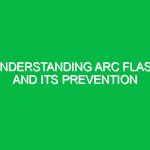In an age where electrical safety is paramount, Ground Fault Circuit Interrupters (GFCIs) stand out as essential devices. These devices play a critical role in preventing electrical shocks and minimizing the risk of electrical fires, particularly in high-risk environments such as bathrooms, kitchens, and outdoor settings. Understanding GFCIs—not just their functionality but also their significance in the realm of Health, Safety, and Environment (HSE)—is crucial for both professionals and everyday users. This article delves into the intricate world of GFCIs, highlighting their usage, associated hazards, and best practices for safety.
Understanding Ground Fault Circuit Interrupters (GFCIs)
At its core, a Ground Fault Circuit Interrupter (GFCI) is a safety device that disconnects a circuit when it detects an imbalance in the electrical current. This imbalance often occurs when electricity escapes the intended circuit, which can happen when a person comes into contact with water or other conductive materials. GFCIs are designed to protect individuals from electric shock by interrupting the flow of electricity, thus preventing serious injuries or fatalities.
As a personal anecdote, I recall a friend who had a near-miss experience in their bathroom. One morning, while reaching for a hairdryer, they accidentally dropped it into a sink filled with water. Fortunately, the GFCI installed in that bathroom tripped immediately, cutting off the power and averting a potential tragedy. This incident underscores the vital role GFCIs play in maintaining safety in household and commercial environments.
The Relevance of GFCI Usage in HSE
In the realm of Health, Safety, and Environment (HSE), GFCIs are indispensable tools that help mitigate risks associated with electrical installations. Their implementation aligns with the broader objectives of HSE regulations: to protect individuals from harm, ensure safe working conditions, and promote environmental safety. GFCIs are particularly relevant in locations where moisture is prevalent, as the combination of water and electricity poses a significant hazard.
Potential Hazards and Risks Associated with GFCI Usage
While GFCIs are designed to enhance safety, they are not without their challenges. Understanding these potential hazards is crucial for effective risk management. Here are some key risks associated with GFCI usage:
1. False Sense of Security
One of the most significant dangers lies in the false sense of security that GFCIs can create. Users may assume that having a GFCI installed means they are entirely safe from electric shock. This misconception can lead to risky behaviors, such as using electrical devices near water without taking additional precautions. It is vital to remember that while GFCIs greatly reduce the risk, they do not eliminate it entirely.
2. Improper Installation
Another potential risk stems from improper installation. A GFCI must be installed correctly to function as intended. For instance, if a GFCI is wired incorrectly, it may not trip in the event of a ground fault, leaving users vulnerable. It is essential for trained electricians to handle the installation to ensure compliance with safety standards.
3. Environmental Factors
Environmental conditions can also affect GFCI performance. For example, excessive moisture or dirt can impair the device’s ability to detect ground faults, potentially leading to failures. Regular maintenance and testing of GFCIs are crucial to ensure that they remain functional and reliable.
4. Component Failure
Like all electrical devices, GFCIs can fail over time. Wear and tear, exposure to extreme temperatures, or electrical surges can compromise their effectiveness. Regular testing, typically recommended once a month, is vital to check that the GFCI is operating correctly. If a GFCI fails to trip when it should, it poses a serious risk to users.
Safety Precautions and Best Practices for GFCI Usage
To maximize the safety benefits of Ground Fault Circuit Interrupters, several best practices and precautions should be followed:
1. Regular Testing
It is recommended to test GFCIs at least once a month. Most GFCIs come equipped with a “Test” button. Pressing this button should trip the GFCI, cutting off power. After testing, ensure the reset button is pressed to restore power. This simple action can save lives by ensuring the device is operational.
2. Proper Installation by Qualified Professionals
Always ensure that GFCIs are installed by qualified electricians who understand the requirements of the National Electrical Code (NEC). Proper installation is key to ensuring that the device functions as intended and provides the necessary protection.
3. Educate Users
Education is crucial in promoting safe practices. Users should be informed about the purpose of GFCIs and the importance of not relying solely on them for safety. Workshops or informational pamphlets can serve as effective tools for raising awareness.
4. Use GFCIs in High-Risk Areas
Install GFCIs in areas where the risk of electrical shock is heightened, such as kitchens, bathrooms, laundry rooms, and outdoor outlets. These locations are often exposed to water, making GFCIs essential for safety.
5. Replace Old or Faulty GFCIs
If a GFCI frequently trips or fails to reset after testing, it should be replaced immediately. Aging units can lose their effectiveness, and relying on them could lead to dangerous situations.
Regulations and Standards Governing GFCI Usage
GFCI usage is governed by various regulations and standards to ensure safety in residential and commercial settings. The National Electrical Code (NEC) is one of the primary regulatory frameworks in the United States. It mandates the use of GFCIs in specific locations, including:
1. Residential Settings
The NEC requires GFCIs in all bathrooms, kitchens, and outdoor receptacles. In addition, any receptacle located within six feet of a water source must also be GFCI-protected.
2. Commercial Settings
In commercial environments, GFCIs are mandated in areas where electrical equipment may come into contact with water, such as swimming pools, spas, and wet locations. Compliance with these regulations is essential for maintaining a safe work environment.
3. Local Codes
Many local jurisdictions may have additional codes or amendments that enhance the NEC’s requirements. It is crucial for electricians and property owners to stay informed about local regulations to ensure compliance.
Conclusion
Ground Fault Circuit Interrupters (GFCIs) are vital components in the ongoing effort to enhance electrical safety within the Health, Safety, and Environment (HSE) framework. By understanding their function and potential risks, as well as adhering to safety practices and regulatory standards, individuals can significantly mitigate the dangers associated with electricity. GFCIs are not just devices; they are lifesavers that offer peace of mind in our increasingly electrified world. As we continue to prioritize safety, awareness, and education surrounding GFCI usage will be key to preventing accidents and protecting lives.


